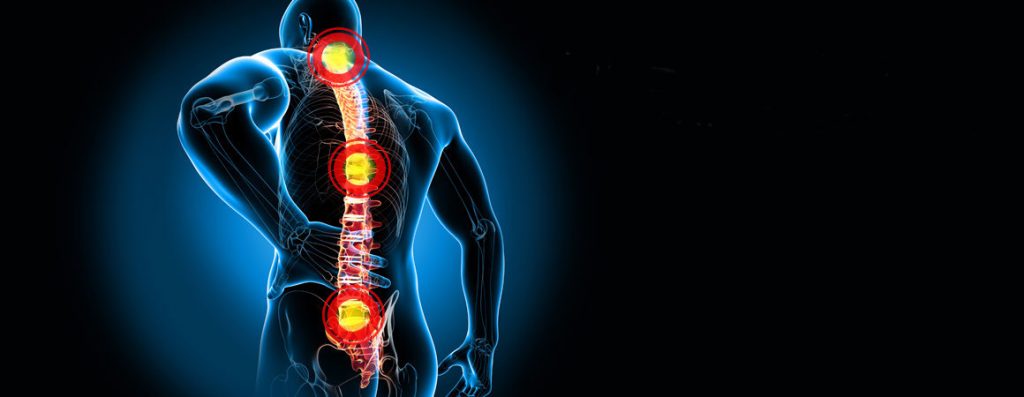
Age and wear on our bodies get to us all, and back pain is one of the most common ailments American adults experience. In fact, experts have estimated that around 80% of people will experience some type of back pain during their life. Plenty of people learn to live with occasional mild back pain with a few aspirin and rest. But when should you consider your back pain an emergency situation?
First, let’s look at the different types of back pain: The neck or cervical region, the upper back or thoracic region, and the lower back or lumbar region can all be separately effected. Neck pain and lower back pain are the most commonly experienced. Lumbar sprains are often experienced from lifting or pulling something the wrong way, and neck pain can be experienced simply from sleeping or sitting at an awkward angle.
Watch out for unusual pain patterns.
Some pain that originates in your back and spine can affect other areas of your body. If you experience shooting pain down your leg, for example, you might be experiencing sciatica, an irritation of your sciatic nerve. It’s fairly common, experienced by around 40% of people during their lifetime. Still, this is often a sign of a serious underlying condition causing the sciatic nerve irritation, such as a bone spur or disc herniation. Damage to your sciatic nerve can be long-lasting and even permanent if not looked at and treated by a professional.
Upper back or thoracic pain might be an indicator of a bigger issue.
Compared to neck or lower back pain, thoracic pain is more likely to be an indicator of an issue you should have medically assessed. This portion of the spine is connected to your ribcage, which provides key protection to your heart and lungs. Damage to the thoracic vertebrae can also lead to cardiopulmonary damage if you’re not careful. Then again, thoracic pain can stem from simply adopting a different posture or exercising. Look for these signs to know when thoracic pain is more than sore muscles:
-
- Fever/chills
-
- Unexplained/uncontrollable weight loss
-
- Noticeable deformity or shape change
-
- Nerve pain, numbness, or tingling in the lower body
-
- Severe stiffness, especially in the morning
- Onset of pain before age 20 or after age 50
Don’t brush off the big stuff.
What are two signs you should get medical help no matter what location your back pain is concentrated in? One, if you’ve recently had some sort of bump or accident, like a sports accident or car wreck. Two, if you’re in constant and/or severe pain. Persistent pain and extreme pain should never be ignored, especially when they start to interfere with your quality of life. If you think something is off, get a professional opinion or two. Call Advanced Pain Medicine Associates to see how your pain can be treated today.





Leave A Comment
You must be logged in to post a comment.